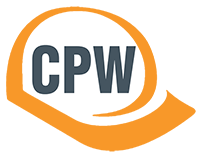When you are working on a Davis-Bacon or Prevailing Wage project, there are a few things you need to know in order to properly credit your certified payroll report against your company’s prevailing wage fringe obligations; and one of the least understood is annualization.
What does annualization mean? That is a good question; it is essentially a big fancy word for “all-hours contribution”. And how that relates to Davis-Bacon employers is this – for every hour your employee works for you, including both public (Davis-Bacon or Prevailing Wage) work and private work, you must contribute to their benefits. The challenge, however, is that state and federal governments do not want you using your prevailing wage fringe dollars to be the sole source of money used to fund your employees’ benefits. In other words, while you can use your public money (Davis-Bacon or state prevailing wage dollars) to help pay for the benefits, unless your benefits have been exempted from annualizaiton, you must contribute other (“private”) money as well. (NOTE: There are two types of benefits that will not be granted an exemption: one is health insurance premiums (including ancillary benefits), though HAS contributions could receive an exemption in some circumstances; and Vacation/Holiday plans. This blog post is dedicated to medical benefit plans! If you are working with a plan that claims an exemption from the annualization requirement, you should demand proof of such exemption in order to protect your company at audit!)
How do you do an annualization calculation? Well, since a medical plan has a set monthly premium, you simply need to determine how much you contribute for every hour the employee works. And to do that, you take the premium amount, multiply it by 12 (months of the year) and divide that number by 2080 (total number of work hours in a 52 week year).
So for example, if your policy is to pay 100% of the employee-only premium of $264 your equation would look like this:
$264 x 12 = $3,168 / 2080 = $1.52 an hour
But, of course, it gets somewhat more complicated when you DON’T pay 100% of all the premiums. So, let’s take that same employee where you have opted to pay 100% of the employee only premium, and say you only pay 50% of the dependent premium. To determine the correct annualization, you will need also need to determine what 50% of the dependent premium is for employee and spouse, employee and child, and family, etc… and then annualize that rate and add it to the employee-only premium you calculated above. So, for our example, if the employee and spouse rate is $504, then 50% of that premium would be $252. Use the same formula above to annualize the employer cost:
$252 x 12 = $3,024 / 2080 = $1.45 an hour
Then you just add these two annualized rates (employee + employee & spouse) together and you come up with $2.97 an hour as your total annualized employer contribution. Seems pretty straight-forward, right?
Of course, there are other details, such as, having to do this for each age band group if you do not have composite rates, because rates are different depending on age group and you CANNOT average cost credit. (It can ONLY be ACTUAL employer cost per individual employee for providing benefits.) Fortunately, if you’re working with a third party administered plan they can assist you in properly annualizing your contributions.
And, of course, if you need further assistance with annualization, you can always ask us!

